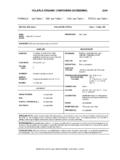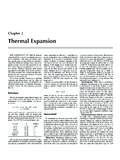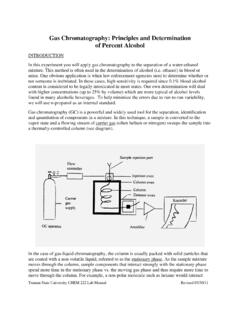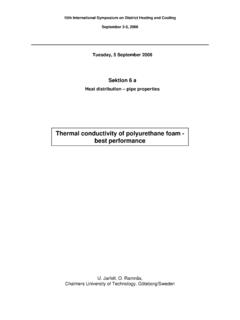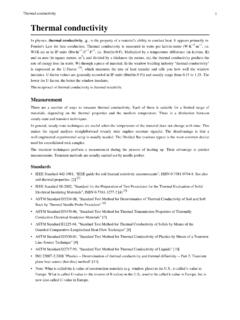Transcription of Guide For Determination Of Required Fire Flow 06-06-2014
1 EDITION 06-2014 COPYRIGHT Insurance Services Office, Inc., 2014 Guide FOR Determination OF NEEDED FIRE FLOW 545 Washington Boulevard Jersey City, New Jersey 07310-1686 (800) 888-4 ISO (4476) 06-2014 COPYRIGHT Insurance Services Office, Inc., 2014 FOREWORD ISO has prepared this Guide as an aid in estimating the amount of water that should be available for municipal fire protection. ISO calls this the Needed Fire Flow. This publication is only a Guide and requires knowledge and experience in fire protection engineering for its effective application. EDITION 06-2014 COPYRIGHT Insurance Services Office, Inc., 2014 INDEX Preface .. i Chapter 1 Needed Fire Flow Formula .. 1 Chapter 2 Construction Factor (C) .. 3 Chapter 3 Occupancy Factor (O) .. 11 Chapter 4 Exposure and Communication Factor (X+P) 16 Chapter 5 Separate Classifications of Buildings.
2 23 Chapter 6 Determining Recognition of Automatic Sprinkler Systems .. 25 Chapter 7 Other Considerations for Determining Needed Fire Flow (NFF) .. 26 Chapter 8 Examples .. 27 Appendix A Needed Fire Flow/Effective Area Table .. 30 EDITION 06-2014 - i - COPYRIGHT Insurance Services Office, Inc., 2014 PREFACE ISO is the premier source of information, products, and services related to property and liability risk. For a broad spectrum of types of insurance, ISO provides statistical, actuarial, underwriting, and claims information and analyses; consulting and technical services; policy language; information about specific locations; fraud-identification tools; and data processing. In the United States and around the world, ISO serves insurers, reinsurers, agents, brokers, self-insured, risk managers, insurance regulators, fire departments, and other government agencies. One of ISO's important services is to evaluate the fire suppression delivery systems of jurisdictions around the country.
3 The result of those reviews is a classification number that ISO distributes to insurers. Insurance companies use the Public Protection Classification (PPC ) information to help establish fair premiums for fire insurance generally offering lower premiums in communities with better fire protection. ISO uses the Fire Suppression Rating Schedule (FSRS) to define the criteria used in the evaluation of a community's fire defenses. Within the FSRS, a section titled "Needed Fire Flow" outlines the methodology for determining the amount of water necessary for providing fire protection at selected locations throughout the community. ISO uses the needed fire flows to: 1. Determine the community's "Basic Fire Flow (BFF)." The Basic Fire Flow is the fifth highest Needed Fire Flow (NFF) in the community. ISO uses the BFF to determine the number of apparatus, the size of apparatus fire pumps, and special fire-fighting equipment needed in the community.
4 2. Determine the adequacy of the water supply and delivery system. ISO calculates the NFF for selected properties and then determines the water flow capabilities at these sites. ISO then calculates a ratio considering the need (NFF) and the availability (water flow capability). ISO uses that ratio in calculating the credit points identified in the FSRS. ISO developed the NFF through a review of actual large-loss fires. ISO recorded the average fire flow and other important factors, including construction type, occupancy type, area of the building, and exposures. Those factors are the foundation of the needed fire flow formula. The following pages include a number of excerpts from another ISO document, the Specific Commercial Property Evaluation Schedule (SCOPES). ISO uses the SCOPES manual to weigh features of individual properties for the purpose of defining the building's vulnerability to future fire loss. Insurers also use the information in their underwriting and ratemaking decisions.
5 EDITION 06-2014 - 1 - COPYRIGHT Insurance Services Office, Inc., 2014 CHAPTER 1 Needed Fire Flow Formula To estimate the amount of water Required to fight a fire in an individual, non-sprinklered building, ISO uses the formula: NFFi = (Ci)(Oi)[ + (X + P)i] where NFFi = the needed fire flow in gallons per minute (gpm) Ci = a factor related to the type of construction and effective area Oi = a factor related to the type of occupancy X = a factor related to the exposure hazard of adjacent buildings P = a factor related to the communication hazard with adjacent buildings To calculate the NFF of a building, you will need to determine the predominant type (class) of construction, size (effective area) of the building, predominant type (class) of occupancy, exposure to the property, and the factor for communication to another building. Here is the step-by-step process: Step 1.
6 Determine the predominant construction type and the associated factor (F). Step 2. Determine the effective area (A). Step 3. Substituting the values for "F" and "A" into the formula = 18F( A ) and calculate the construction factor (C). Step 4. Round the construction factor (C) to the nearest 250 gpm. Step 5. Determine the predominant occupancy type and the associated factor (O). Step 6. If there is exposure buildings, determine the exposure factor by identifying the construction type and length-height value of the exposure building, construction type of the facing wall of the subject building and the distance (in feet) to the exposure building. Also make note of any openings and protection of those openings in the wall facing the subject building (the building the needed fire flow is being calculated on). The factor related to the exposure building is (X). Step 7. If there is communication with adjacent buildings, determine communication factor by identifying the combustibility of the passageway, whether the passageway is open or enclosed, the length, and a description of any protection provided in the passageway openings.
7 The factor related to the communications between buildings is (P). Step 8. Substitute the values for the factors in the formula NFFi = (Ci)(Oi)[ + (X + P)i] to determine the needed fire flow. EDITION 06-2014 - 2 - COPYRIGHT Insurance Services Office, Inc., 2014 Note: (1) The NFF for commercial occupancies protected by an automatic fire sprinkler system installed in accordance with the general criteria of NFPA 13, Standard for Installation of Sprinkler Systems, is the demand at the base of the automatic sprinkler riser and inside/outside hose stream demand. (2) The NFF for residential occupancies (such as apartment buildings, lodgings and rooming houses, board and care facilities, hotels, motels and dormitories) protected by an automatic fire sprinkler system installed in accordance with the general criteria of NFPA 13R, Standard for the Installation of Sprinkler Systems in Residential Occupancies up to and including Four Stories in Height, is the demand at the base of the automatic sprinkler riser.
8 The minimum NFF is 1,000 gpm at 20 psi for a duration of 2 hours. (3) The NFF for a 1- or 2-family dwelling protected with an automatic fire sprinkler system installed in accordance with the general criteria of NFPA 13D, Installation of Sprinkler Systems for One- and Two-Family Dwellings and Manufactured Homes, is the demand at the base of the automatic sprinkler riser. The minimum NFF is 500 gpm at 20 psi for a duration of 1 hour. EDITION 06-2014 - 3 - COPYRIGHT Insurance Services Office, Inc., 2014 CHAPTER 2 Construction Factor (C) To determine the portion of the NFF attributed to the construction and area of the selected building, ISO uses the formula: ()A18FC= Where A = effective area F = coefficient related to the class of construction: F = for Construction Class 1 (Frame) = for Construction Class 2 (Joisted-masonry) = for Construction Class 3 (Non-Combustible) = for Construction Class 4 (Masonry Non-Combustible) = for Construction Class 5 (Modified Fire Resistive) = for Construction Class 6 (Fire Resistive) Appendix A provides the values for the construction factor C, for a range of construction classes (F) and effective areas (A).
9 1. Construction Materials and Assemblies ISO uses the following definitions to determine the construction class for a building: a. Combustible: Wood or other materials that will ignite and burn when subjected to fire, including materials with a listed flame-spread rating greater than 25. Also included are assemblies or combinations of combustible materials with other materials, such as the following: (1) Metal walls or floors sheathed on either interior or exterior surfaces (with or without air space) with wood or other combustible materials (flame-spread rating over 25). (2) Metal floors or roofs with combustible insulation or other combustible ceiling material attached to the underside of the floor or interior surface of the roof deck, or within 18" of the horizontal supports. (3) Combustible wall materials with an exterior surface of brick, stone, or other masonry materials (commonly known as "masonry veneer").
10 (4) Noncombustible wall or roof construction on a skeleton wood frame (commonly known as "wood-iron clad"). (5) Combustible wall or roof construction on a noncombustible or slow-burning frame. (6) Composite assemblies of noncombustible materials with combustible materials, such as a combustible core between two noncombustible panels, or a noncombustible panel with a combustible insulation material (flame-spread rating over 25). EDITION 06-2014 - 4 - COPYRIGHT Insurance Services Office, Inc., 2014 (7) Composite assemblies of noncombustible or slow-burning materials combined with foamed plastic materials (with any flame-spread rating), unless the foamed plastic materials qualify as slow-burning. (Refer to Item f, below.) (8) Combustible assemblies which are listed as having not less than a one-hour rating. b. Fire-resistive: Noncombustible materials or assemblies which have a fire-resistance rating of not less than one hour.

